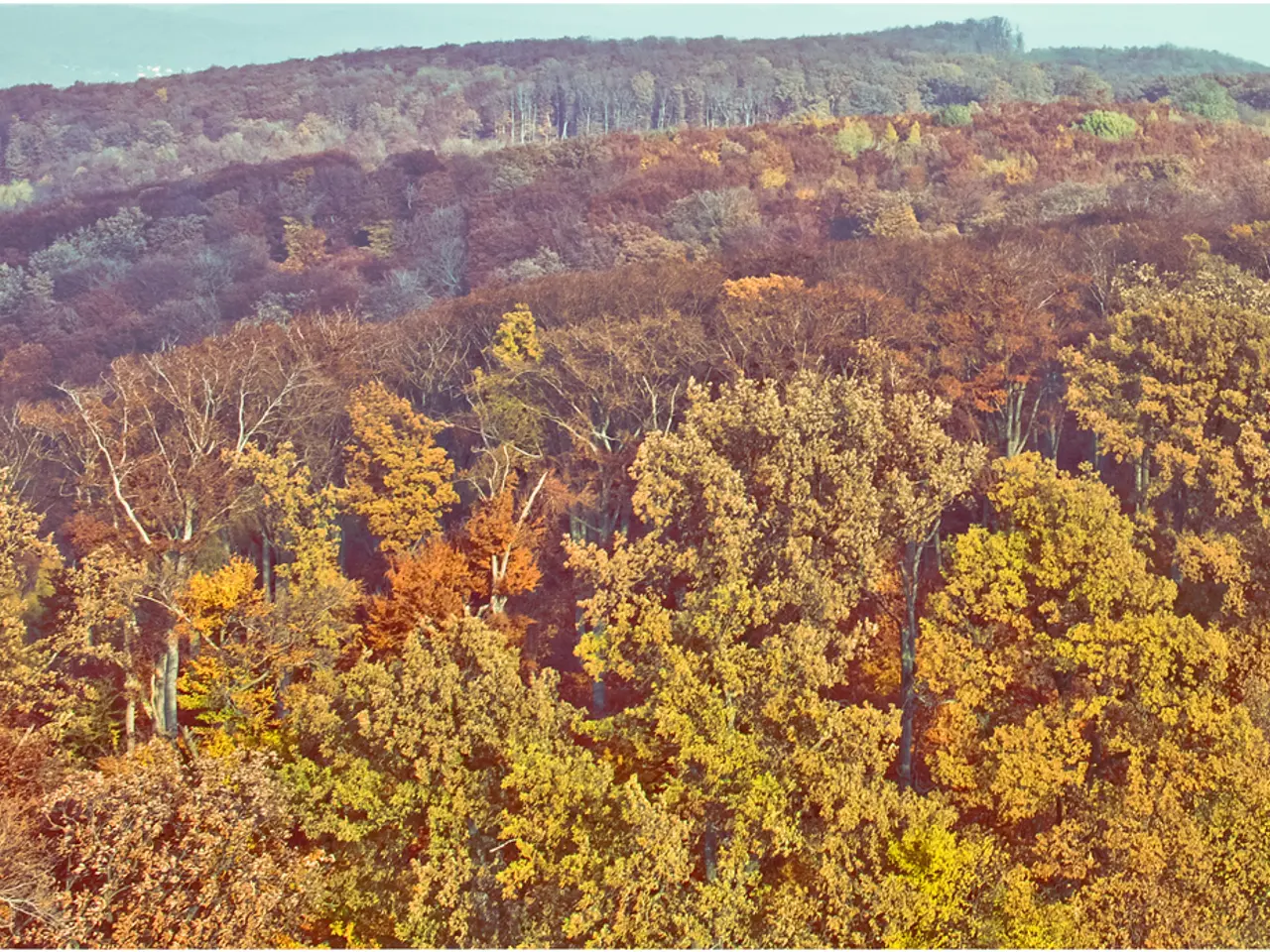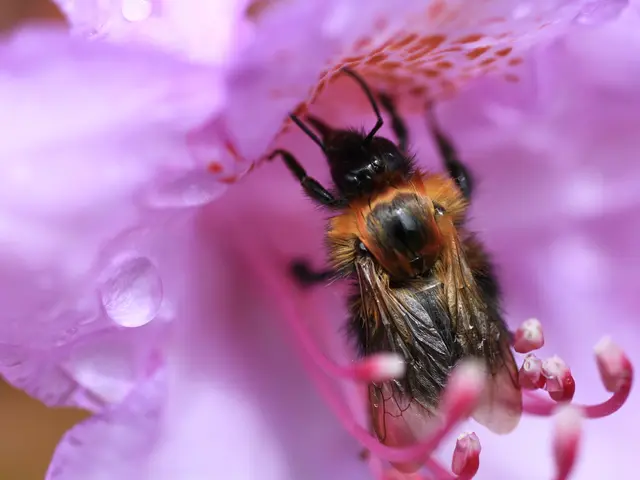In light of climate change, gardeners face a novel dilemma: shifting from apple trees to lemon trees
Adapting British Gardens to Climate Change
In response to the changing climate, gardeners across the UK are making significant adjustments to their gardens to ensure they remain vibrant and resilient.
David Knott, curator at the Royal Botanic Garden in Edinburgh, suggests that ginkgo, metasequoia, and liriodendron could thrive in Edinburgh's future climate. Meanwhile, gardeners in other regions are looking towards drought-resistant and climate-resilient plants from warmer regions such as South America, the Mediterranean, and Australasia. Species like monkey puzzle trees, succulents, Zelkova, and Pinus mugo are being incorporated to withstand hotter, drier summers and unpredictable weather.
Garden designs are also evolving to include features that manage water more effectively. Rainscaping for flood mitigation, water capture and storage systems, and soil arrangements directing water flow to flood-tolerant zones are becoming commonplace. Additionally, gardeners are prioritising perennial plants, which have deep root systems that improve soil carbon storage, retain water better, reduce erosion, and foster biodiversity.
Historic UK gardens and experimental landscapes like Sheffield Park and Kew Gardens are serving as testing grounds for identifying plant species and design techniques that will thrive in anticipated future climate conditions. These efforts provide valuable data and blueprints that homeowners and landscapers nationwide can adopt to enhance garden resilience to drought, floods, and extreme weather variability.
Key design adaptations include dividing gardens into zones tailored to seasonal conditions—winter sections for wetter periods and summer areas focused on drought tolerance—and incorporating innovative materials and construction methods, such as 3D-printed eco-friendly structures, that reduce carbon footprints and support sustainable garden infrastructure.
Not all gardeners are optimistic about the changes. Tom Brown, head gardener at West Dean in West Sussex, is concerned about the potential loss of apples due to the changing climate. Meanwhile, Derry Watkins, a nursery owner in the South West, is propagating tender plants indoors while leaving original plants outdoors to see how they fare.
Some gardeners are taking a proactive approach. James Hitchmough, based in Somerset, conducted a study of climate predictions before planting his new garden. He is experimenting with a South African geophyte Cyrtanthus obliquus outside in his garden. Dan Pearson, a designer in Somerset, is experimenting with phlomis in different parts of his garden to see how they fare.
The Ventnor Botanic Garden on the Isle of Wight has planted the first citrus grove in the UK, while the Horniman Museum gardens in southeast London are moving their Prehistoric Garden due to tree ferns not being able to cope with the current site conditions.
Errol Reuben Fernandes, head of horticulture at the Horniman Museum gardens, is dealing with horse chestnut trees affected by leaf miner and bleeding canker. Despite the challenges, Derry Watkins remains sanguine about adapting to the changing climate and is keen to try new things in her garden.
James Hitchmough advises that gardeners should conduct their own experiments due to the unpredictable climate changes. He suggests that things with big soft leaves will probably be losers in the south, but will grow well in the northwest. David Knott anticipates that Edinburgh's climate will compare to the south of England within 30 years.
In conclusion, the UK's gardens are undergoing a significant transformation as gardeners adapt to the changing climate. From incorporating drought-resistant plants to implementing water management systems, the UK's gardens are becoming more resilient and sustainable. Despite the challenges, many gardeners are embracing the changes and looking forward to seeing what the future holds for British gardening.
[1] RHS The Garden. (2021). Adapting to climate change. Retrieved from https://www.rhs.org.uk/advice/profile?id=1000345
[2] The Guardian. (2020). How UK gardens are adapting to climate change. Retrieved from https://www.theguardian.com/lifeandstyle/gardening-blog/2020/mar/19/how-uk-gardens-are-adapting-to-climate-change
[3] The Telegraph. (2021). Climate change: How UK gardens are adapting to the new normal. Retrieved from https://www.telegraph.co.uk/gardening/how-to-grow/climate-change-how-uk-gardens-are-adapting-to-the-new-normal/
- Gardeners in various UK regions are turning to horticulture, investigating drought-resistant plants from warmer regions like South America, the Mediterranean, and Australasia, such as monkey puzzle trees, succulents, Zelkova, and Pinus mugo, to make their gardens more climate-resilient.
- David Knott, curator at the Royal Botanic Garden in Edinburgh, predicts that ginkgo, metasequoia, and liriodendron could thrive in Edinburgh's future climate.
- Garden designs are shifting to include features that manage water more effectively, like rainscaping for flood mitigation, water capture and storage systems, and soil arrangements directing water flow to flood-tolerant zones.
- Perennial plants with deep root systems are being prioritized, as they help improve soil carbon storage, retain water better, reduce erosion, and foster biodiversity.
- Key design adaptations in gardens include dividing them into zones tailored to seasonal conditions and incorporating innovative materials and construction methods that reduce carbon footprints and support sustainable garden infrastructure.
- James Hitchmough, a gardener in Somerset, advises conducting personal experiments due to unpredictable climate changes, suggesting that plants with big soft leaves may not flourish in the south, but could grow well in the northwest.




